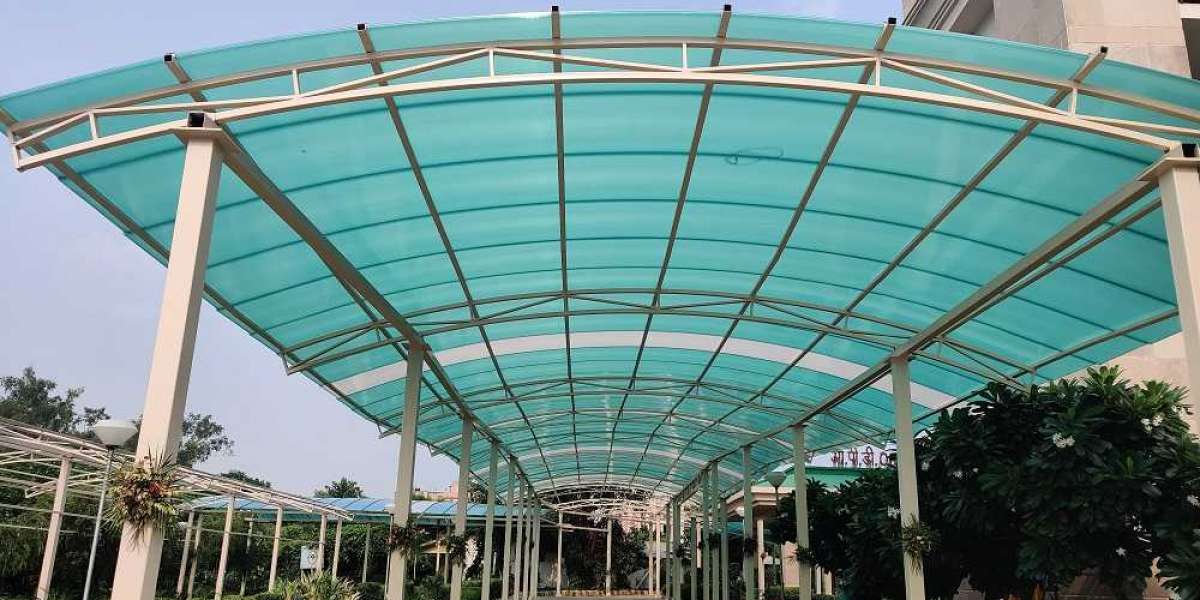Polycarbonate is a type of thermoplastic that has gained widespread use across various industries due to its exceptional combination of strength, durability, and transparency. It is one of the most versatile materials available, offering both practical benefits and aesthetic appeal in a range of applications, from eyewear lenses to construction materials. In this article, we will explore the properties, uses, and advantages of polycarbonate, as well as some of its limitations.
What is Polycarbonate?
Polycarbonate is a high-performance plastic made from the polymerization of bisphenol A (BPA) and phosgene. It is known for its unique combination of optical clarity, high impact resistance, and heat resistance. Polycarbonate plastic is inherently tough and can absorb a significant amount of energy before breaking, making it an ideal material for a wide range of products that require both transparency and strength.
Key Properties of Polycarbonate
One of the standout features of polycarbonate is its exceptional strength-to-weight ratio. Here are some of the key properties that make it so versatile:
Impact Resistance: Polycarbonate is known for its remarkable ability to withstand high levels of impact. It is more resistant to shattering than glass, which is why it is often used in applications where safety is a concern, such as in eyewear lenses, safety barriers, and bullet-resistant windows.
Optical Clarity: Polycarbonate is highly transparent, with light transmission properties similar to glass. This makes it a popular choice for optical lenses, displays, and other products requiring clear visibility.
Heat Resistance: Polycarbonate is able to withstand high temperatures, making it suitable for use in both hot and cold environments. It has a high melting point and can maintain its stability in a range of temperatures.
Lightweight: Despite its strength and durability, polycarbonate is relatively lightweight compared to glass or metal, which makes it a practical choice for applications where reducing weight is important.
UV Resistance: Polycarbonate is naturally UV resistant, which helps it resist degradation and discoloration when exposed to sunlight. However, for extended outdoor use, additional UV coatings can be applied to further enhance its longevity.
Applications of Polycarbonate
Polycarbonate's combination of strength, clarity, and heat resistance makes it useful in a wide variety of fields. Below are some of the most common applications:
Eyewear Lenses: One of the most common uses for polycarbonate is in the manufacture of eyeglass lenses, particularly for safety glasses, sunglasses, and sports eyewear. Polycarbonate lenses are lighter and more impact-resistant than glass lenses, making them a safer and more comfortable option.
Optical Media: Polycarbonate is widely used in the production of optical discs, such as CDs, DVDs, and Blu-ray discs. The material’s optical clarity and durability help ensure that these discs are both readable and long-lasting.
Construction and Architecture: Polycarbonate is used for roofing, skylights, and windows due to its ability to allow light to pass through while providing protection from the elements. It is also used in greenhouse construction and other structures that require a balance of transparency and durability.
Automotive and Aerospace Industries: In these industries, polycarbonate is used in the production of components such as headlamp lenses, sunroofs, and interior panels. Its high impact resistance and light weight make it a preferred choice for automotive manufacturers looking to reduce weight without sacrificing safety.
Medical Devices: Polycarbonate is often used in medical applications, including components for surgical instruments, diagnostic equipment, and drug delivery systems. Its biocompatibility and ability to be sterilized make it a reliable choice in the medical field.
Advantages of Polycarbonate
Polycarbonate offers several advantages over other materials like glass, acrylic, and metal:
Durability: Polycarbonate's resistance to cracking, shattering, and breaking makes it a highly durable material that can withstand significant wear and tear over time.
Ease of Fabrication: Polycarbonate can be easily molded, cut, and formed into different shapes, which makes it a preferred material for manufacturers. It can be easily thermoformed or injection-molded, making it adaptable to a wide variety of product designs.
Safety: Due to its impact resistance and shatterproof properties, polycarbonate is often chosen for products where safety is a top priority. It is particularly useful in products like helmets, eyewear, and safety shields.
Environmental Resistance: Polycarbonate is resistant to weathering, UV radiation, and chemical exposure, which makes it suitable for outdoor applications. It is often used in environments where other plastics or materials might degrade over time.
Limitations of Polycarbonate
Despite its many advantages, polycarbonate does have some limitations that should be considered when choosing materials for specific applications:
Scratching: Polycarbonate is more prone to scratching than glass or acrylic. While it can be coated with scratch-resistant layers, it still requires more careful handling to maintain its clarity and appearance over time.
Cost: Polycarbonate can be more expensive than other plastics, which may be a consideration in cost-sensitive applications. However, its long-term durability and performance often justify the higher initial cost.
Chemical Sensitivity: Polycarbonate can be sensitive to certain chemicals, such as strong solvents and cleaners, which can cause it to discolor or degrade. It is important to choose appropriate cleaning agents when maintaining polycarbonate products.
Conclusion
Polycarbonate is an incredibly versatile and durable material that offers a wide range of benefits for both industrial and consumer applications. Its combination of strength, clarity, heat resistance, and impact resistance makes it ideal for use in fields such as eyewear, construction, automotive, and medical devices. While there are some limitations, such as its susceptibility to scratching and higher cost compared to some alternatives, the material’s overall performance and longevity make it a top choice for many manufacturers and consumers. As technology continues to advance, it’s likely that polycarbonate will remain an essential material in a variety of industries.




